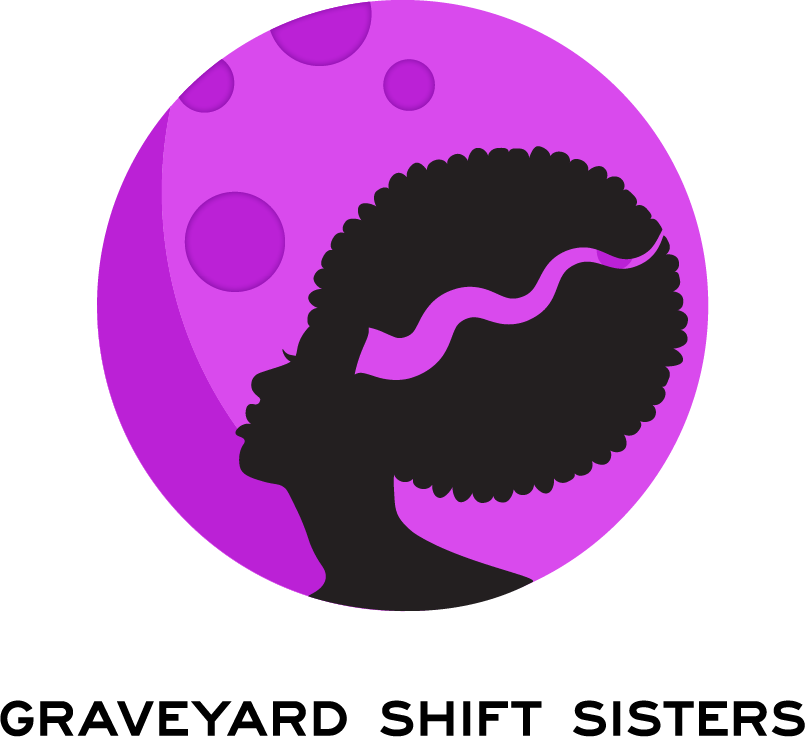Interview With Dr. Robin Means Coleman, Author Of Horror Noire
Dr. Coleman challenges us horror film aficionados to amplify our memories with her book, Horror Noire: Blacks in American Horror Films from the 1890's to Present. Just in time to usher in the Halloween season, Dr. Coleman took some time out of her busy back-to-school schedule to answer a few, burning questions I concocted about horror film scholarship in academia and Horror Noire to get at the heart of the importance of the book's perspective on race in the horror genre.
The Preface to Horror Noire echoes many of the introductions in books on the genre I have read in the past. The authors consistently feel compelled to 'come out' so to speak about their long-time interest in horror films. Working in academia, do you still feel that film studies, to some degree, continues to stigmatize research projects that focus on the horror genre? How have you seen it progress or regress during your time as an undergraduate up to the present times?
In the Preface, I am picking up on a sardonic observation
offered by Rick Worland (a professor at Southern Methodist University) in his
2007 book The Horror Film. Rick wonders why horror film scholars feel
compelled to make declarations of when their interest in horror began, as if it
will lend to their credibility. I poke a bit of fun at myself as I, too,
talk about how I ‘grew up’ with horror films. Starting the book this way
is purposeful. I want to signal to readers that though this book is a
smart, analytical effort, I am not going to suck the life out of the horror
genre, a genre which is frequently fun(ny) and always fantastic!
I will say that such researcher biographies are useful as
they situate the scholar’s theoretical and lived experiences, thereby giving
the reader a sense of what informs the subsequent analysis. I can think of no moment when we have been without
scholarship on horror. Aristotle’s Poetics, specifically his analysis of
tragedy, is seminal for horror studies; so, too, are the earliest analyses
(e.g., medieval study) of tales of purgatory and hell.
What has changed over millennia is how horror has been
attended to in research. As it pertains specifically to horror films, we
have seen scholarship focus on the potential (negative) effects of horror
consumption on its audiences. There has been scholarship on why audiences
find horror pleasurable. The aesthetics of horror has risen to the fore,
as has attention to the horror industry and how horror is developed, funded,
and marketed. Add to that a movement in which horror’s more transgressive
elements are placed front and center. I think what is exciting is all of
this work is now (since the 1990s or so) proudly clustered under the rubric of
“horror studies,” a field supported by conferences, scholarly journals, and
disciplinary specialization.
Horror Noire takes a very thorough,
historical approach to African American participation in the horror genre since
film's inception. What was the process like to zero in on such a broad and
ambitious undertaking for a book and why do you feel African American
participation is so important to this genre?
Actually I wish I could do a better job of “zeroing in” when I do these studies! I always seem compelled to start at the beginning of a story. I could probably write more books if I could get past this bit of neurosis.
Actually I wish I could do a better job of “zeroing in” when I do these studies! I always seem compelled to start at the beginning of a story. I could probably write more books if I could get past this bit of neurosis.
Horror Noire was born out of a truly very simple question:
“Does the Black guy really always die first in horror movies.” [Spoiler
alert: According to Horror Noire, the answer is a resounding “no!”]
Romero’s Night of the Living Dead (1968) got me thinking about the function of
Blacks’ demise in horror. The star of the film, Ben, dies last and he
dies needlessly—that is what makes the film so horrifically powerful. So,
I started to think about the full history of horror films in which Blacks
appear, and wondered what purpose their character, and their subsequent death,
served.
For example, I discovered that in some films, particularly what I call “Blacks in Horror films,” Blacks are important to illustrate just how bad [a]ss a monster is. That is, our mythology has created a fearsome big, black bogeyman. Well, if the monster can take out the big, black bogeyman, then that monster must be the mother of all monsters! You see?
For example, I discovered that in some films, particularly what I call “Blacks in Horror films,” Blacks are important to illustrate just how bad [a]ss a monster is. That is, our mythology has created a fearsome big, black bogeyman. Well, if the monster can take out the big, black bogeyman, then that monster must be the mother of all monsters! You see?
In other films, such as what I refer to as “Black horror
films,” Black characters are at times used to reveal that the real “monster” in
our society is bigotry and social inequities. Take many of the horror
films of the 1970s such as Sugar Hill (1974) or 1975’s Welcome Home Brother
Charles (aka Soul Vengeance) in which Black pride is highlighted within a
commentary that exposes and stands against racism.
You make a clear distinction between "Blacks in Horror
Films" and "Black Horror Films" as additional
categories in the horror genre. How do these categories and their films offer
unique perspectives to horror and enrich American discourse on race?
By theorizing Blacks’ participation in horror this way, I
am trying to make clear that though Blacks have been part and parcel to the
genre since its beginning, how they are represented varies. It is easier
to understand if we can think about films such as Nigger in a Woodpile (1904)
or The Birth of a Nation (1915) as horror films, or more obvious horror films
such as The Serpent and the Rainbow (1988) or Candyman (1992).
In these films, Blacks and Blackness--their historical
experiences and cultural tropes--,are often exploited objects or window
dressing. Their race and culture serve a supporting role, tasked largely to
advance the cause of White superiority while asserting Black deviance. The issue here is not about “positive” or “negative.” These kinds of
dichotomies are not easily applied to the horror genre. The point is
better revealed in Black horror films which focus on the Black
cultural milieu, treat Blacks as subjects, and their life and culture in far
more whole, full, and complex ways. Ganja and Hess (1973), Def by
Temptation (1990), and Tales from the Hood (1995) accomplish this.
One section of Horror Noire that really struck a chord with me is your discussion of "Enduring Women," which could be considered a complex, holistic Black Final Girl character from 1970s Blaxploitation horror cinema. Were these characters written exclusively by men? If so and considering the recent rise in female directors in the independent horror film circuit, do you feel if women garnered creative control behind the camera that these Enduring Women narratives would've been enhanced? In what ways?
One section of Horror Noire that really struck a chord with me is your discussion of "Enduring Women," which could be considered a complex, holistic Black Final Girl character from 1970s Blaxploitation horror cinema. Were these characters written exclusively by men? If so and considering the recent rise in female directors in the independent horror film circuit, do you feel if women garnered creative control behind the camera that these Enduring Women narratives would've been enhanced? In what ways?
Enduring Women are sexy and sexualized. Enduring
Women do not just fight for their own lives, but for that of their (male) lover.
Enduring Women are in a battle to save not only themselves, but their community
as well, which is typically under attack by gangs of unscrupulous
criminals. The monster is not some alien or nut job with a chain
saw. Rather, Enduring Women are engaged in an ongoing battle against the
“monsters” of racism, brutal police, an influx of drugs and other wickedness
plaguing their communities. Notably, if an Enduring Woman wins a battle,
she knows that she has not won the war. She must be strong to fight injustice
another day. Final Girls (franchises and sequels not withstanding) kill
the monster and that is the end of it.
The notion of authorship is complex. While many, but not
all, horror films have screenplays written by men (I believe Blacula had a female
co-writer), you cannot ignore how Black actors and cinematographers have worked
to inform the presentations of Blackness through their performances and
creation of an aesthetic. For example, the truly brilliant, highly
educated actor William Marshall, who sang opera, performed Shakespeare,
appeared on Broadway, and portrayed the likes of Paul Robeson and Frederick
Douglass, was insistent that Black religions be presented in media
respectfully—not as some aberrant, stereotypical “voodoo.” You see that
most pointedly in his role as Bishop Garnet Williams in the possession horror
film Abby (1974). Marshall delivers a really interesting lecture on
African religions in a way only Marshall can.
By way of another example, filmmaker Ernest Dickerson has
been creative, progressive, and even subversive in ensuring that the “Black” is
effectively presented in all forms of cinema (and TV). We can see
Dickerson’s vision in everything from TV’s horror offerings such as Dexter and
The Walking Dead to horror films Bones (2001), Tales from the Crypt: Demon
Knight (1995), and Def by Temptation (1990). As for women, particularly
women of color in horror, we have a very long way to go on the inclusion
front. Though, we should keep an eye on Felicia D. Henderson, a Black
woman, who has produced and written for the sci-fi series Fringe (as well as a
great number of TV shows focused on Black people). She’s doing some work
with DC Comics as well.
There hasn't been a mainstream explosion of African
American-centered horror films quite like the 1970s since. With some strides in
the 90s and more "hip-hop inspired 'Black horror'" within the past
ten years, have you seen any profound Black Horror Films in the 21st century
worth recommending? If not, what would you like to envision for African
American participation in horror for the future?
Hmmmm….profound horror. Someone
once called Silence of the Lambs (1991) “horror for grad students.” I do
not think this should be the rule for horror, and it stands out to me as more
of an exception. Future Academy Award winning horror might require big
budgets and a more mainstreamed story. That is not what makes the horror
film genre, well, the horror film genre. Horror is not all low-budget
slash and splatter either. The hallmark of horror is that it is very
narrative driven, and its stories are daring, risky, and provocative. Its
storylines not only feature themes not easily taken up elsewhere, but it pushes
those storylines well beyond what mainstream media can typically handle. Horror thrives on the margins—that is where it is most profound and at its best.
What is worth recommending? I really enjoyed Keith Josef
Adkins’ first installment of his web series The Abandon, which is billed as
sci-fi, but thus far seems very horror-like. It features five Black men
on a camping trip coming to terms with what might be the end of the
world. They are not only fighting for their lives, but also their own
demons. Web series are the new horror frontier.
Thank you for your time Dr. Coleman!
You are quite welcome!
You can purchase Horror Noire on Amazon and
check out a recommendation from Dread
Central.

